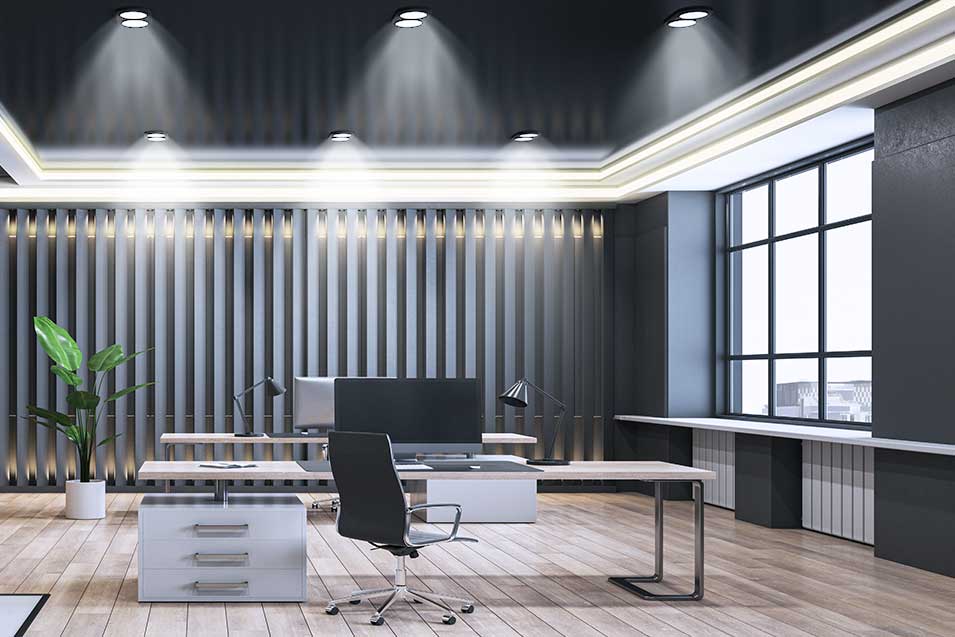
The impact of lighting on mood & productivity
The intricate relationship between lighting and our daily lives extends far beyond mere visibility. It plays a crucial role in influencing our mood, health, and productivity. In this exploration, let’s delve into the profound impact lighting has on our psychological and physiological well-being, and how it can be optimized to enhance our daily experiences.
The Psychological Impact of Lighting
Lighting has an intense effect on our psychological state. Natural light, originating from the sun, is a key driver of our circadian rhythms, the internal clock that regulates our sleep-wake cycle. Exposure to natural light during the day boosts our mood and energy levels, thanks to the increased production of serotonin, a mood enhancing hormone. Conversely, inadequate lighting can lead to feelings of sadness or even depression, a phenomenon often observed in the winter months when daylight hours are shorter.
Artificial lighting, too, has its implications. The colour temperature of light, measured in Kelvin, can evoke different emotions and influence cognitive performance. Cooler light, which has a higher Kelvin rating, is akin to bright midday light and can enhance alertness and reduce fatigue. Warm light, with a lower Kelvin rating, resembles the hues of sunrise or sunset and can create a sense of calm and relaxation.
Lighting and Productivity
The impact of lighting on productivity is equally significant. Studies have shown that environments with optimal lighting can lead to improved concentration, higher energy levels, and fewer errors. This is particularly true in workplace settings, where the quality of lighting can affect employees’ focus and efficiency. Poor lighting conditions, such as flickering lights or insufficient illumination, can cause eye strain, headaches, and drowsiness, all of which detract from productivity.
Natural light is particularly beneficial for workplace productivity. It not only reduces the reliance on artificial lighting, which can save energy but also creates a more inviting and comfortable work environment. Incorporating natural light into office design, through windows, skylights, or light shelves, can improve workers’ satisfaction and performance.
Conclusion
The influence of lighting on mood and productivity underscores the importance of thoughtful lighting design in our homes and workplaces. By harnessing the power of both natural and artificial light, we can create environments that not only meet our functional needs but also promote our psychological and physical health. As we continue to understand the complex ways in which light affects us, we can make more informed decisions to enhance our wellbeing and efficiency in our daily lives.
Frequently Asked Questions (FAQs) :
Q1. What role does colour temperature play in lighting design?
Colour temperature plays a crucial role in lighting design by affecting mood, visibility, and the aesthetic appeal of a space. Warmer lights create a cozy ambiance, suitable for living areas, while cooler lights enhance concentration which make them ideal for office spaces. Choosing the appropriate colour temperature can significantly impact the functionality and atmosphere of an environment.
Q2. How can I optimize lighting in my home office?
To optimize lighting in your home office, combine natural and artificial lighting effectively. Position your workspace to make the most of daylight, avoiding glare. Utilize adjustable task lighting to focus light where needed to reduce eye strain. Select LEDs with a cooler colour temperature to promote environment. alertness and productivity, and ensure ambient lighting eliminates shadows for a balanced work.
Q3. What are the consequences of poor lighting in the workplace?
Poor lighting can lead to eye strain, headaches, and fatigue, negatively impacting employee wellbeing and productivity. It can also cause discomfort and lower job satisfaction, potentially resulting in increased absenteeism. Ensuring adequate and appropriate lighting is essential for maintaining focus, health, and efficiency in the workplace.
Q4. Can lighting improve productivity?
Yes, lighting can significantly enhance productivity. Proper lighting minimizes eye strain and fatigue, while natural light improves mood and energy. Task lighting allows for efficient performance of activities. The right lighting setup can create a conducive work environment, leading to better performance and higher satisfaction.

